Practicing "La" in the Music Room
When students have a solid understanding of what “la” sounds like, feels like, and looks like, they are ready to move on to practicing this melodic element.
In the practice phase students refine their skills and explore la in new ways - and it can be tons of fun for both students and their teachers.
Today we’ll look at practicing la through aural skills, instruments, composition, and improvisation.
Heads up, this is a lengthy post, full of activities that challenge students, and took me about five to six weeks to unpack.
Ear Training
One of my favorite quotes from Carl Orff says:
“Since the beginning of time, children have not liked to study. They would much rather play, and if you have their interests at heart, you will let them learn while they play; they will find that what they have mastered is child’s play.”
It’s no surprise that games are our first choice when looking for ways to practice any element.
One of the games I love to use is called "Put a Pin On It!".
It's such a simple listening activity but it requires players to aurally discriminate between several melody patterns. My students always have a blast with this game, and I do too!
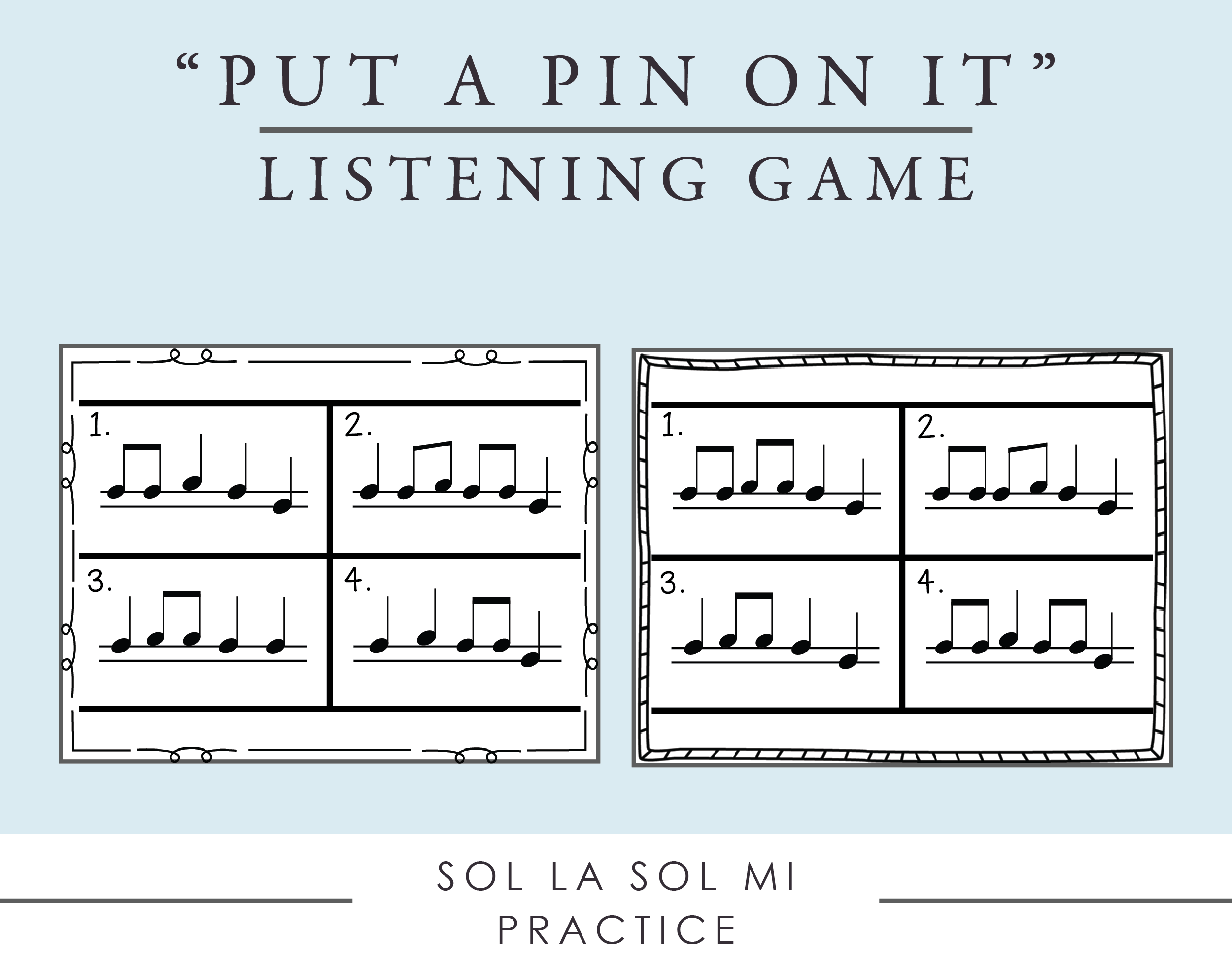
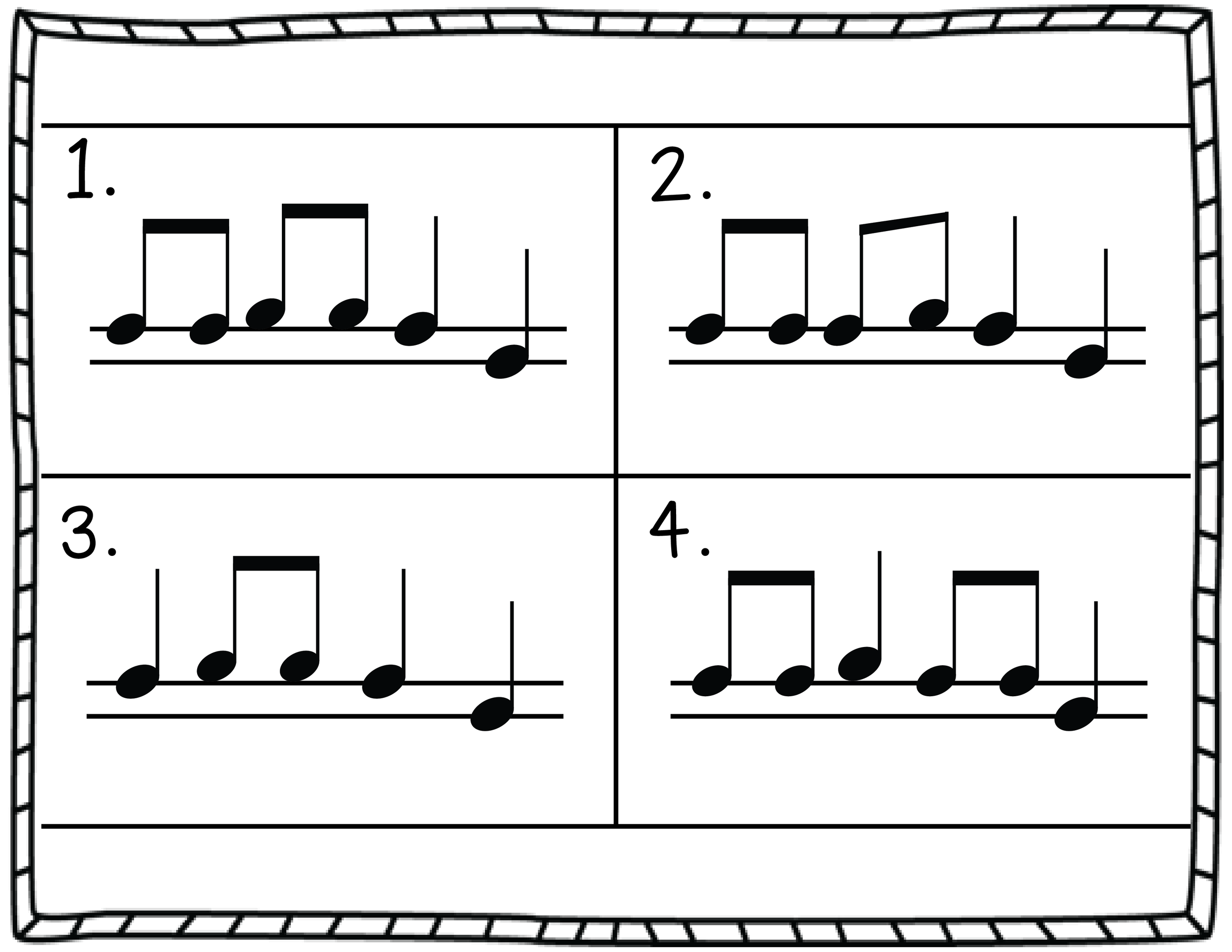
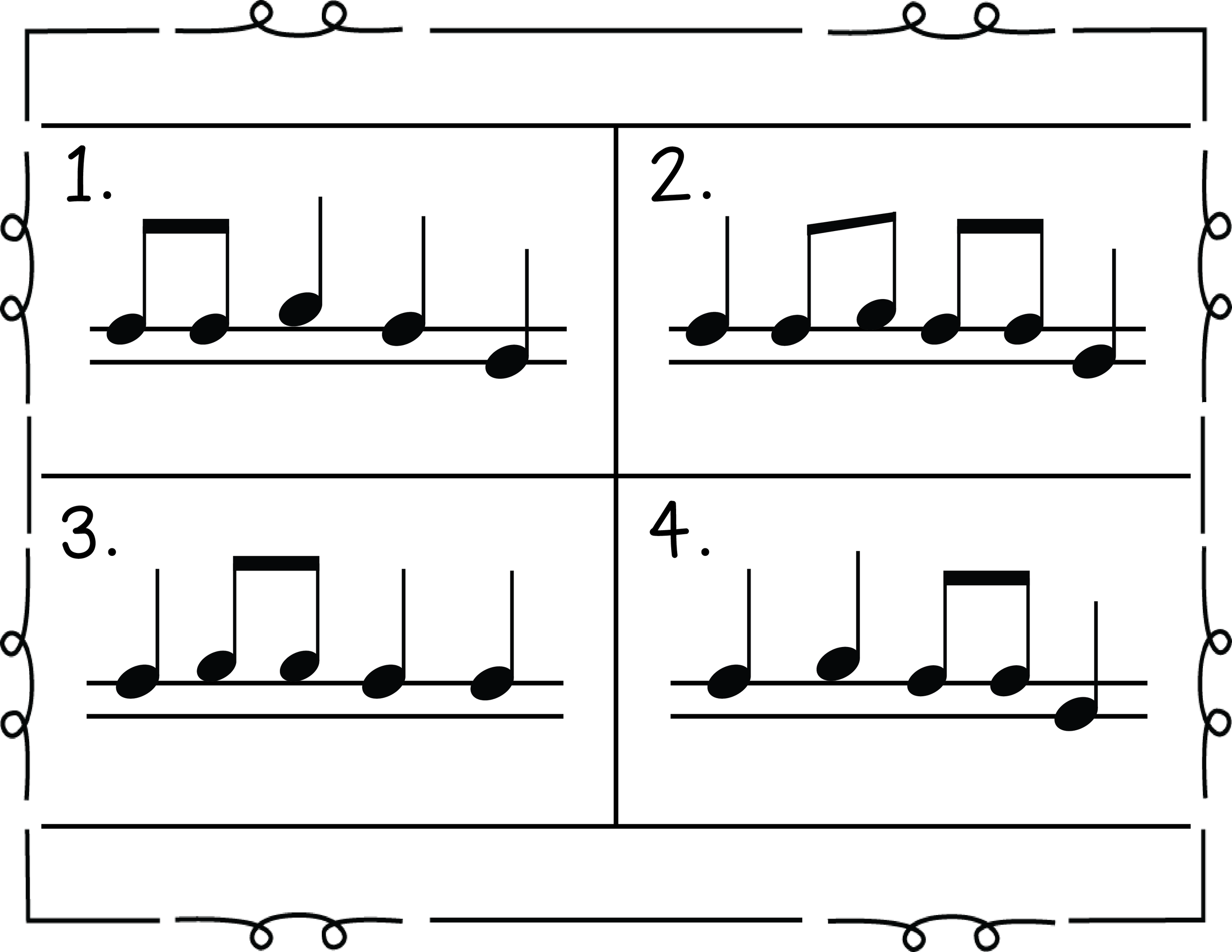
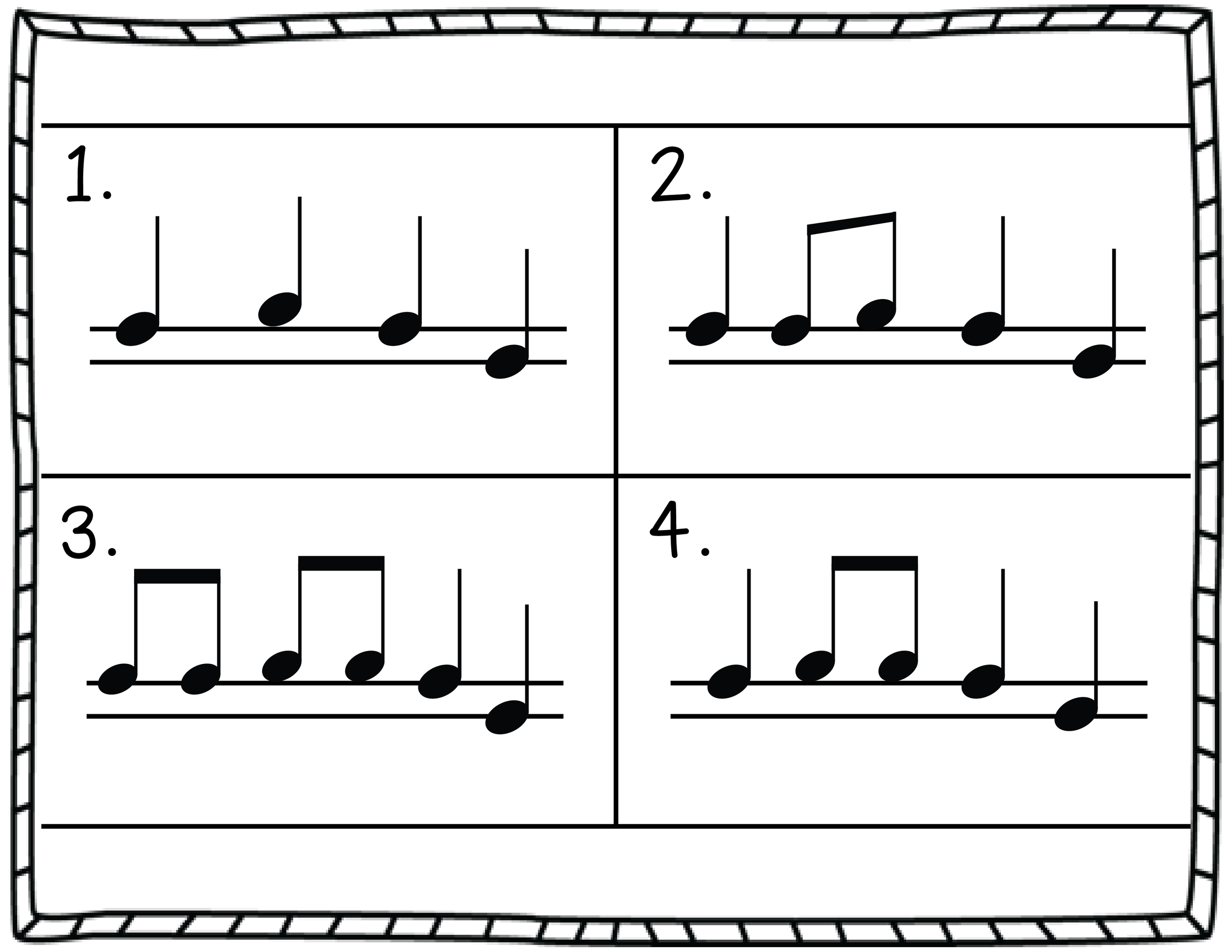
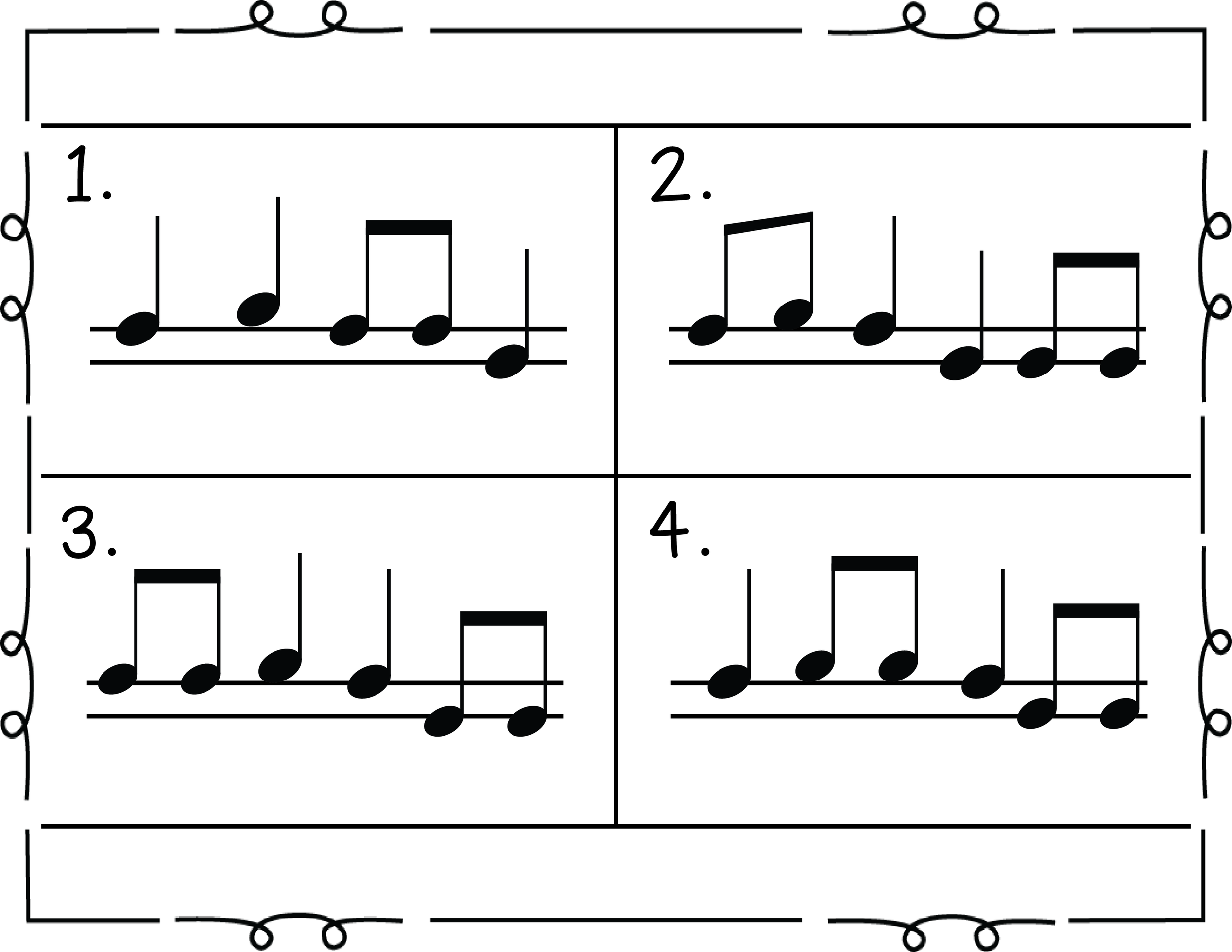
How to Play:
Pass out the page you choose to use, along with a clothespin for each player.
The teacher sings each number on a neutral syllable (such as "loo" or "la")
Students place the clothespin on the number they think they heard.
This game is totally free - just click on the image to download!
There are four individual pages so you can play this game again and again. Enjoy!
Instruments
There are a few important steps I take before my students play instruments, and they all happen away from the instruments themselves.
The Purpose:
Because the purpose of this activity was to practice la, I want melody to stay the focus point of this experience.
Aural Skills Before Instruments:
One way to do this is to write out a song using la in stick notation. I chose Apple Tree, and wrote out the first eight beats.
From a list of four song options on the board, students choose which song they think they heard (this can be done individually, or with a partner). When they have their song, they'll show you the number they chose on their fingers.
When students have correctly identified Apple Tree, we'll prep for instruments by singing it on solfege (using hand signs), and then singing it on letter names where do is C.
"Ghosting" and Manipulatives
In the beginning stages of instrument playing, I have students "ghost it", or mime out playing their instrument silently. This can be done with students looking at a visual on the board, with barred instrument manipulatives, or at the instruments themselves.
In my classroom we're lucky to have a handful of barred instruments, but not enough for each student. To help every student be successful on instruments, I created these manipulatives that I shared recently on my instagram. By laminating them and adding some velcro they allow students to practice, even when there aren't enough instruments to go around!
To Instruments
Finally, students play the first eight beats of Apple Tree on instruments while the rest of the class plays the game.
Put a rhyme on S M L
Adding melody to an existing rhyme is another way to help students practice la. In my classroom, I chose the rhyme, Rain on the Green Grass:
Rain on the green grass, rain on the tree.
Rain on the housetop but not on me.
A Noisy Worksheet
I have a few rules in my classroom when students do this kind of work - the most important rule is that students are not allowed to work quietly. Their eyes light up and a few of them giggle. I say, “That’s right! Working quietly is against the rules. This room needs to be full of noise as you work.” My most important rule is that students need to SING as they write.
What Makes a Valuable Composition?
One of the dangers of worksheet based compositions is that students end up jotting down notes at random and calling it a composition.
True, it technically is a composition because they are adding melody to an existing rhythm - but there was no thought given to how they wanted it to sound. It’s a sight before sound approach, and it normally results in a melody that is not singable. When students try to perform their compositions they find an arrangement of pitches that is unnatural and difficult to sing.
Instead, I want students to think of a melody first, and then write it down.
Step one: Sing the rhyme on sol, mi, and la.
Step two: Figure out the rhyme using hand signs.
Step three: Finally write down your melodic idea!
For students who struggle to approach their compositions this way, working in partners is a great option. It gives students a bit more accountability and allows them to think through the process out loud.
Melodic Improvisation
For this activity, students read first four beats to a song they know very well, and improvise the second four beats.
I find this works best, especially at the beginning, if students are allowed to choose from a written melody, or make up their own.
This could be done easily with any songs from this post, but I chose Bluebird Bluebird.
Student Choice in Improvisation
Especially the first time you try this activity, it’s good to give students written options. True, this is not pure improvisation in the sense that students aren’t making up original music from scratch. However, they are making their own musical choices, and that’s a big first step.
Before We Improvise:
Not all students may be ready to improvise right away.
This may be because they haven’t solidified the melodic material enough yet.
It may also be that they’re not ready for the independent musicianship it takes to create something new on the spot while hearing their classmates create a contrasting material at the same time.
It may be very simply because it can be intimidating to improvise for some students.
That’s why we offer musical choice. It offers differentiation and student ownership, while still meeting our objectives.
It’s the extra layer of scaffolding some students will need as they grow into holistic, independent musicians.
I'm always impressed by what young musicians can accomplish. Singing, playing, instruments, composition, and improvisation all require playfulness, and courage to take a front seat in the music room.
Enjoy your teaching week!





